Art & Exhibitions
PST ART Is Celebrating the Ties That Bind Art and Science. Here Are 10 Must-See Shows
From a show on Latin American computer art, to a spotlight on cyberpunk, to Cai Guo-Qiang's A.I.-assisted fireworks.

From a show on Latin American computer art, to a spotlight on cyberpunk, to Cai Guo-Qiang's A.I.-assisted fireworks.

Min Chen

Art and science are converging at 2024’s PST ART. The fourth iteration of the Getty’s initiative will see more than 70 exhibitions, opening across Southern California over the next five months, that will probe the rich and lasting intersection of creativity and scientific inquiry. “Neither has limits, both speak to the imagination,” said Katherine E. Fleming, the J. Paul Getty Trust’s president and CEO, in a statement. “When they are put together, each is even more powerful.”
Some shows will explore how creatives have availed themselves of technological advancements, while others delve into how the pairing of art and engineering has shaped our past and will form our future. Ancient cosmologies and biotechnology will get an airing, as will science fiction and artificial intelligence. There will be fireworks.
To help you navigate the sprawl of PST ART’s offerings, we’ve highlighted 10 shows that you can’t miss.
1. “Sci-fi, Magick, Queer L.A.: Sexual Science and the Imagi-Nation” at the ONE Archives at USC Libraries
Through November 23
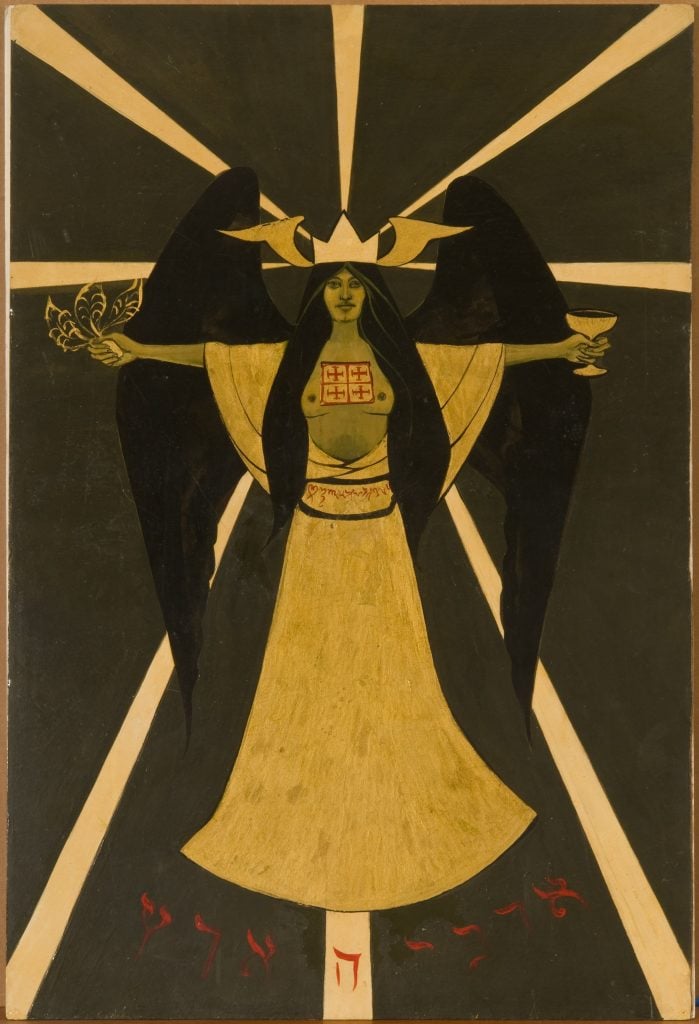
Cameron, Holy Guardian Angel According to Aleister Crowley (1966). Photo: Alan Shaffer. Courtesy of the Cameron Parsons Foundation, Santa Monica.
The mingling between the science fiction, occult, and LGBTQ communities has been deep and alchemic. Proof is in this exhibition, which explores how creative visionaries imagined and designed worlds of their own across literature, music, fashion, and illustrations from the 1930s through the ’60s. Come for rare showings of works by the likes of filmmaker Kenneth Anger, Weird Tales illustrator Margaret Brundage, poet-occultist Marjorie Cameron, and surrealist painter Renate Druks.
2. “Future Imaginaries: Indigenous Art, Fashion, Technology” at the Autry Museum of the American West
September 7, 2024–June 21, 2026
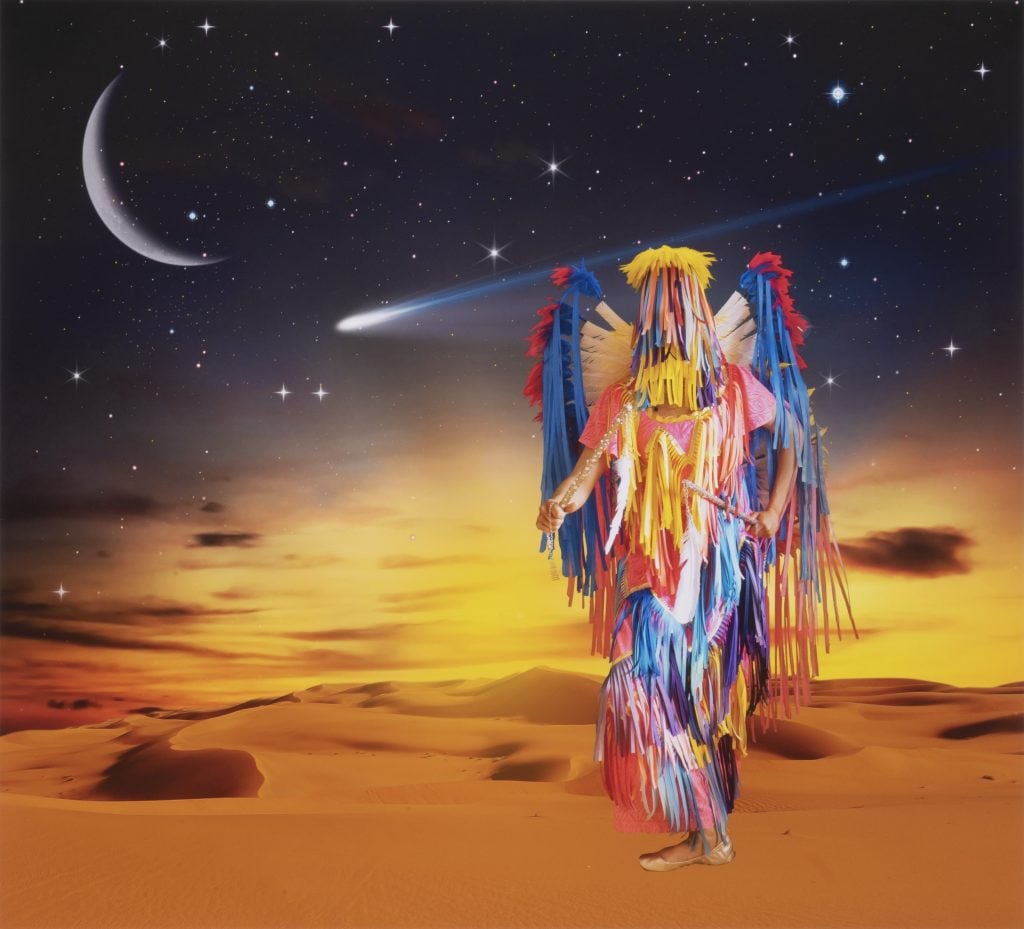
Wendy Red Star, Stirs Up the Dust (2011). Courtesy of Wendy Red Star and Autry Museum of the American West.
The Indigenous imagination is in full effect here, across 58 works that see artists deploy technologies and visions of alternative futures as means to counter and heal from colonial trauma. That self-determination is evident in Andy Everson and Neal Ambrose Smith’s Indigenizing of sci-fi narratives, as well as in new works including Virgil Ortiz’s site-specific installation, which restages the 1680 Pueblo Revolt as a space odyssey, and Wendy Red Star‘s fantastical reinterpretations of traditional ceremonial wear.
3. “Sensing the Future: Experiments in Art and Technology (E.A.T.)” at the Getty Center
September 10, 2024–February 23, 2025
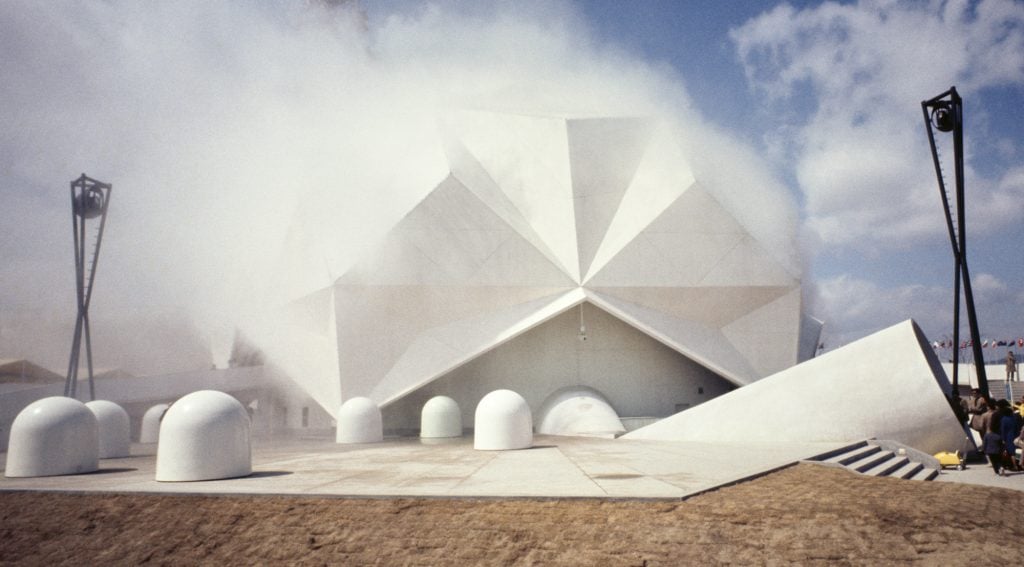
E.A.T., Pepsi-Cola Pavilion, 1970. Photo: Shunk-Kender. Floats © Robert Breer/Kate Flax/gb agency, Paris. Fog © Fujiko Nakaya. Courtesy Experiments in Art and Technology. Light Towers © Forrest Myers. © J. Paul Getty Trust.
As host of PST ART, the Getty is organizing no less than eight exhibitions—from a presentation of avant-garde photography to a showcase of new scientific research into Van Gogh’s Irises. This show homes in on E.A.T., a pioneering initiative masterminded by Robert Rauschenberg and Robert Whitman in 1967 that paired artists and engineers to produce groundbreaking works. Its story will be revisited here using original footage and archival material, featuring contributions by John Cage, Yvonne Rainer, and Fujiko Nakaya, among others.
4. “Breath(e): Toward Climate and Social Justice” at the Hammer Museum
September 14, 2024–January 5, 2025
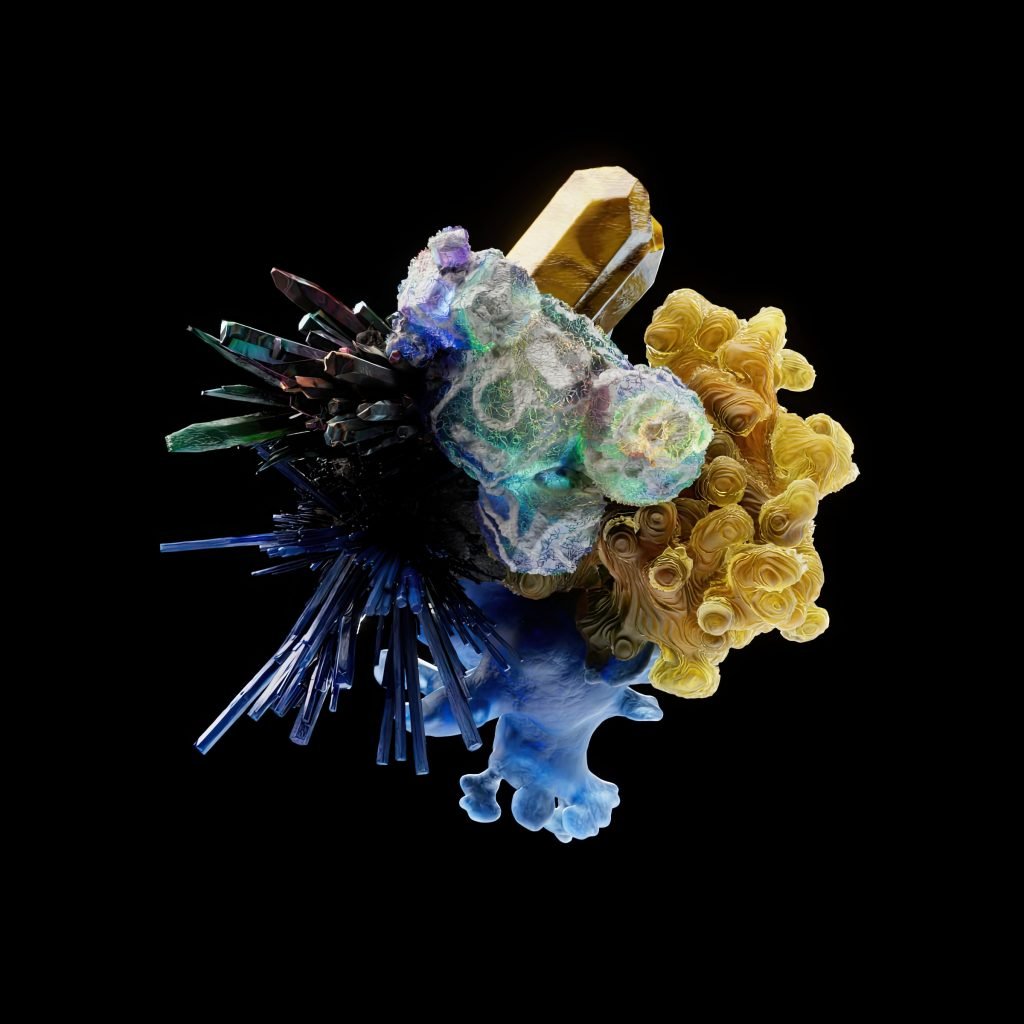
Michael Joo, Danil Krivoruchko, Snark.art, a growth generation of OG:CR 12 (2021–). © Michael Joo, Danil Krivoruchko, and Snark.art.
“Breath(e)” sees its organizers, artist Glenn Kaino and curator Mika Yoshitake, bring together 25 artists who are confronting the climate crisis and our anthropogenic reality in incisive and imaginative ways that span mediums. On view here are LaToya Ruby Frazier’s photo series that captures how the Flint water crisis has impacted Black and Brown communities; Lan Tuazon’s outdoor installation crafted out of plastic waste; and Mel Chin’s IOV, which fixes a socially engaged lens on climate injustice.
5. “Cai Guo-Qiang: WE ARE” at the Los Angeles Memorial Coliseum
September 15, 2024
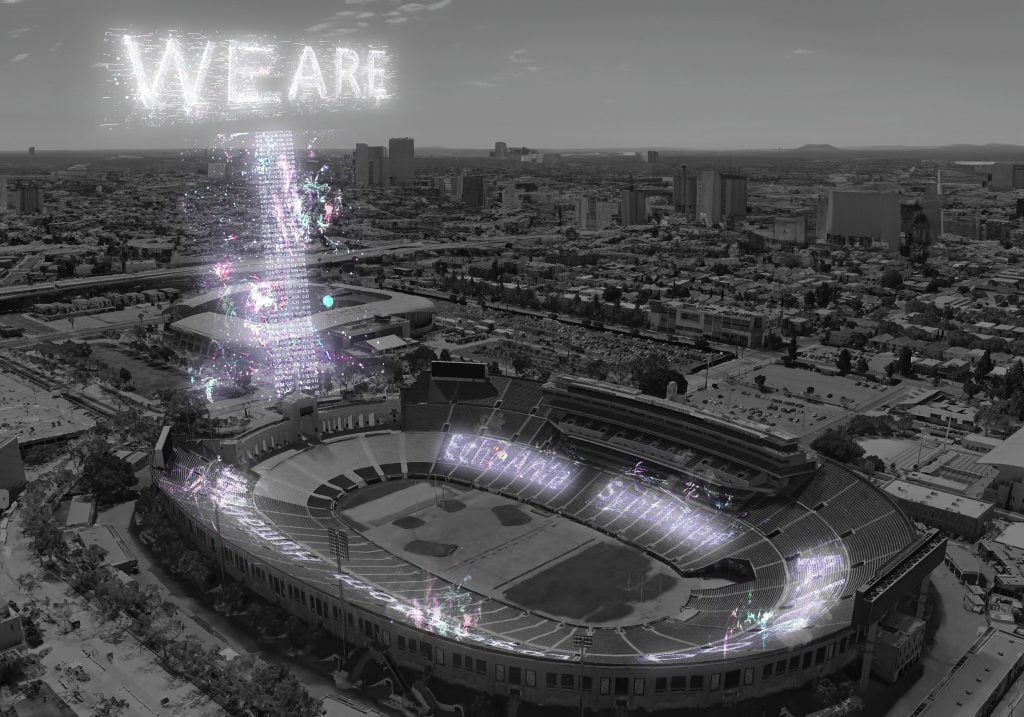
Computer rendering for Cai Guo-Qiang’s WE ARE: Explosion Event for PST ART (2024). Courtesy Cai Studio.
The master of gunpowder himself will stage one of his signature fireworks spectacles to inaugurate PST ART. But unlike his previous explosions, this daytime display was conceived by Cai in collaboration with his A.I. model, cAI™. The multi-act performance will involve a thousand choreographed drones and organic pigments and dyes to create what Cai calls “a grand gesture of the art world integrating the virtual with the real in the era of A.I.” The event coincides with “Cai Guo-Qiang: A Material Odyssey,” opening at the USC Pacific Asia Museum on September 17.
6. “Olafur Eliasson: OPEN” at the Geffen Contemporary at MOCA
September 15, 2024–July 6, 2025
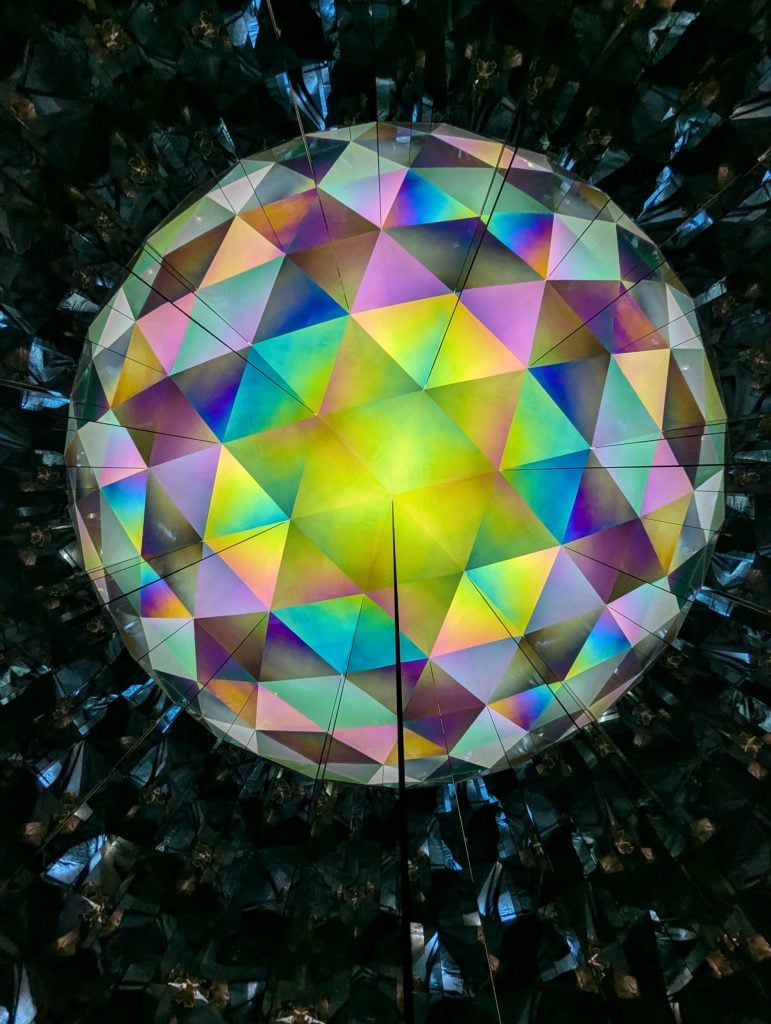
Light experiments for “Olafur Eliasson: OPEN” at the Geffen Contemporary at MOCA, 2024. Photo: Henri Lacoste | Studio Olafur Eliasson. Courtesy of the artist; Tanya Bonakdar Gallery, New York/Los Angeles; neugerriemschneider, Berlin © 2024 Olafur Eliasson.
Eliasson’s first solo exhibition in L.A. will encompass his recent works, plus a dozen new ones commissioned by MOCA—all of them emerging from the artist’s career-long inquiries into perception and environmental awareness. One of these site-specific installations features a group of optical devices that will respond to the museum’s architecture: “They open the museum to the outside,” said Eliasson of the work in a statement, “transforming it into a giant viewing device through which you see your surroundings anew, here and now.”
7. “World Without End: The George Washington Carver Project” at the California African American Museum
September 18, 2024–March 2, 2025
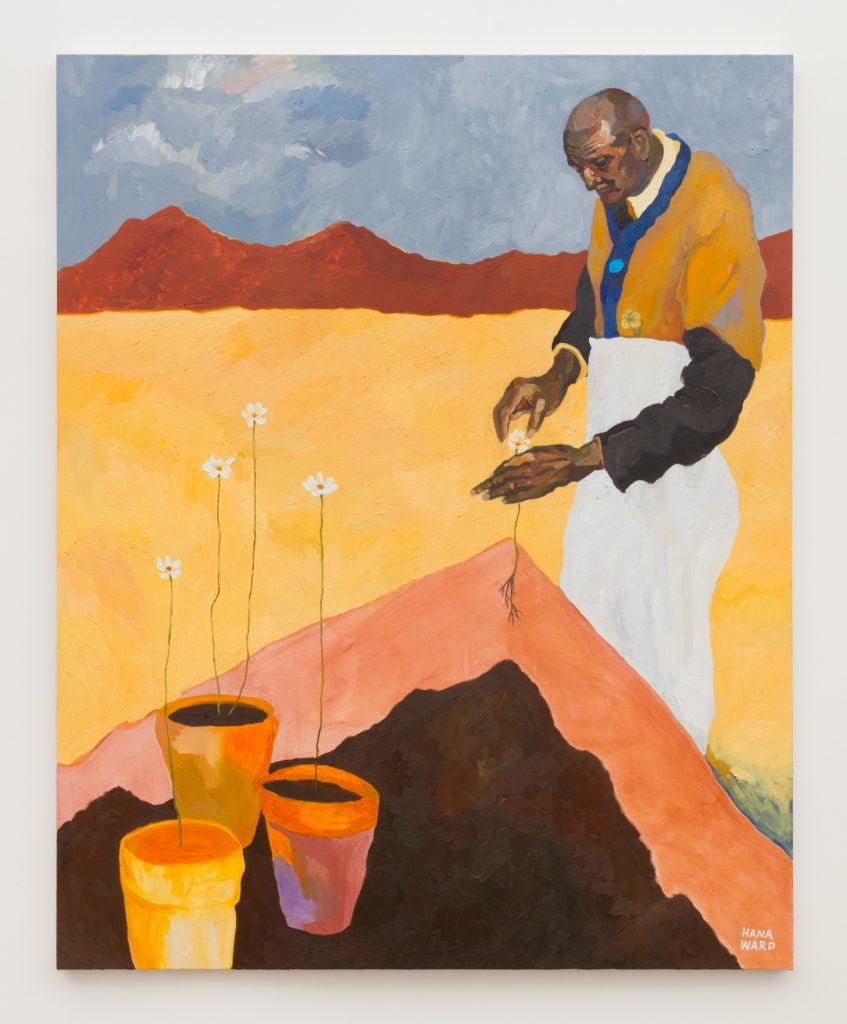
Hana Ward, Pioneer of Possibility (2023). Courtesy of the artist and OCHI. Photo: Deen Babakhyi.
One of the earliest advocates of regenerative agriculture, Carver didn’t just propose then-radical techniques from the use of organic fertilizers to crop rotation—he maintained a painting practice, creating still lifes and weavings using organic dyes and pigments. This spotlight on the plant-based engineer resurfaces his notebooks, lab gear, and rarely seen paintings, while exploring how contemporary artists have engaged with his legacy, to celebrate his enduring contributions to the fields of art and science.
8. “ARTEONICA*: Art, Science, and Technology in Latin America Today” at the Museum of Latin American Art
September 22, 2024–February 23, 2025

Patricia Domínguez, Matrix Vegetal (2021/22). Commissioned by Screen City Biennial and Cecilia Brunson Projects. Installation at Macalline Art Center, Beijing. © Patricia Domínguez.
In the early 1970s, Brazilian artist and theorist Waldemar Cordeiro framed the computer as a democratizing tool for art and culture, and computer-assisted artworks as complex creations he dubbed “arteônica,” or art electronics. Alas, he did not live to see arteônica blossom. This show pays tribute to Cordeiro’s prescience, revisiting the development of computer art in Latin America in the 1960s and ’70s. These historical works—by the likes of Marta Minujín, Pola Weiss, and Juan Downey—will be in dialogue with those by contemporary South American artists who are creating arteônica against a knotty geopolitical backdrop.
9. “Cyberpunk: Envisioning Possible Futures Through Cinema” at the Academy Museum of Motion Pictures
October 6, 2024–April 12, 2026
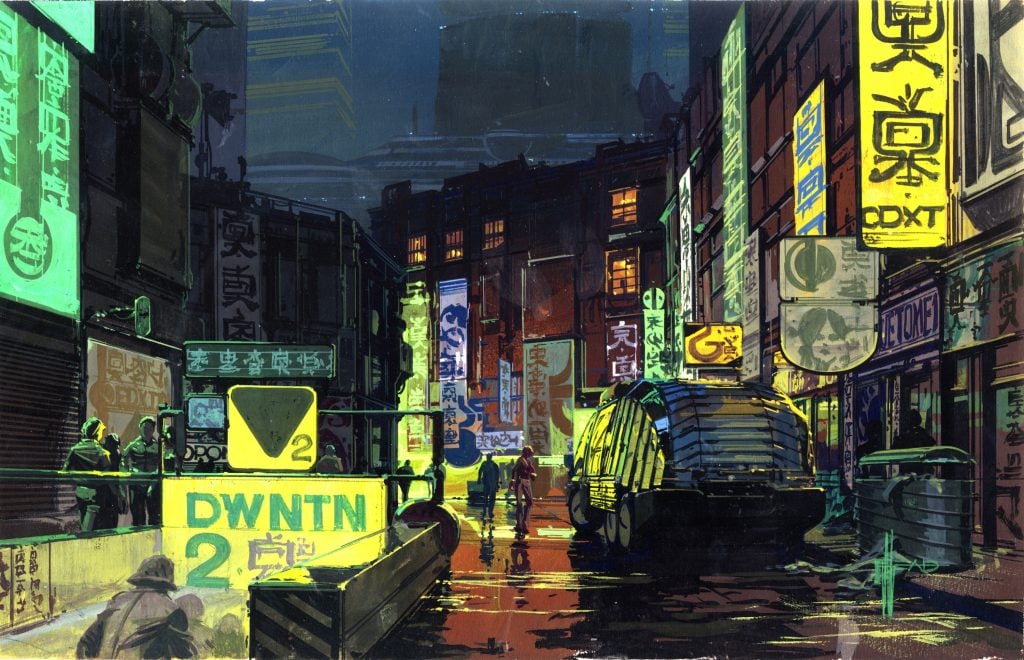
Concept drawing by Syd Mead for Blade Runner (1982). © Syd Mead, Inc.
From the neon-soaked cityscape of Blade Runner (1982) to the sleek dystopia of Ex Machina (2015), cyberpunk narratives and aesthetics have had an abiding hold on cinema. Here, the influence of the sci-fi subgenre—in which cutting-edge technology is juxtaposed against social or ecological blight—is unpacked through production art, props, posters, and costumes from myriad cyberpunk films. Major Hollywood offerings are featured, alongside Afrofuturist and Indigenous futurist productions including Pumzi (2019) and Night Raiders (2021), and anime classics such as Ghost in the Shell (1995).
10. “Digital Witness: Revolutions in Design, Photography, and Film” at the L.A. County Museum of Art
November 24, 2024–July 13, 2025
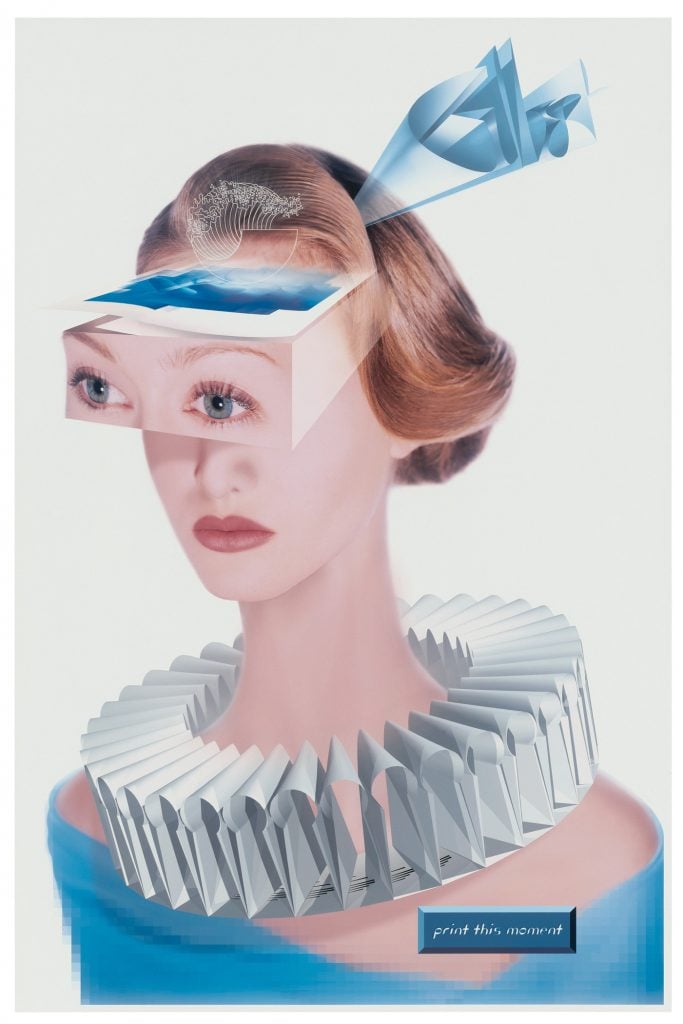
Rick Valicenti (designer), William Valicenti (photographer), Thirst/3st (design firm), Gilbert Paper Company (client), Print This Moment poster (1995). © Rick Valicenti, photo courtesy of the artist.
There’s no overstating how image-editing software has radically reshaped art, design, photography, and, dare we say, reality. “Digital Witness” won’t underplay its hand, bringing together more than 100 works—installations, videos, posters, publications—to interrogate how digital manipulation tools from Adobe Photoshop to A.I. image generators have impacted visual storytelling and styles. Included here are pieces by the likes of Victoria Fu, David Carson, Petra Cortright, Cory Arcangel, Peter Jackson, and Andreas Gursky.